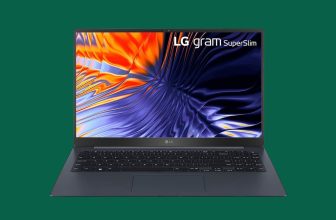
How You Can Tell the AI Images of Trump’s Arrest Are Deepfakes
The viral, AI-generated pictures of Donald Trump’s arrest you might be seeing on social media are positively pretend. But some of these photorealistic creations are fairly convincing. Others look extra like stills from a online game or a lucid dream. A Twitter thread by Eliot Higgins, a founder of Bellingcat, that reveals Trump getting swarmed by artificial cops, working round on the lam, and selecting out a jail jumpsuit was considered over 3 million instances on the social media platform.
What does Higgins assume viewers can do to inform the distinction between pretend, AI pictures, like the ones in his put up, from actual images which will come out of the former president’s potential arrest?
“Having created a lot of images for the thread, it’s apparent that it often focuses on the first object described—in this case, the various Trump family members—with everything around it often having more flaws,” Higgins mentioned over e mail. Look exterior of the picture’s focus. Does the relaxation of the picture look like an afterthought?
Even although the latest variations of AI-image instruments, like Midjourney (model 5 of which was used for the aforementioned thread) and Stable Diffusion, are making appreciable progress, errors in the smaller particulars stay a typical signal of pretend pictures. As AI artwork grows in recognition, many artists level out that the algorithms nonetheless battle to copy the human physique in a constant, pure method.
Looking at the AI pictures of Trump from the Twitter thread, the face appears pretty convincing in lots of of the posts, as do the arms, however his physique proportions might look contorted or melted into a close-by police officer. Even although it’s apparent now, it’s potential that the algorithm would possibly be capable of keep away from peculiar-looking physique elements with extra coaching and refinement.
Need one other inform? Look for odd writing on the partitions, clothes, or different seen gadgets. Higgins factors towards messy textual content as a technique to differentiate pretend pictures from actual photographs. For instance, the police put on badges, hats, and different paperwork that seem to have lettering, at first look, in the pretend pictures of officers arresting Trump. Upon nearer inspection, the phrases are nonsensical.
An further means you may generally inform a picture is generated by AI is by noticing over-the-top facial expressions. “I’ve also noticed that if you ask for expressions, Midjourney tends to render them in an exaggerated way, with skin creases from things like smiling being very pronounced,” Higgins mentioned. The pained expression on Melania Trump’s face appears extra like a re-creation of Edvard Munch’s The Scream or a nonetheless from some unreleased A24 horror film than a snapshot from a human photographer.
Keep in thoughts that world leaders, celebrities, social media influencers, and anybody with giant portions of photographs circulating on-line might seem extra convincing in deepfaked photographs than AI-generated pictures of individuals with much less of a visual web presence. “It’s clear that the more famous a person is, the more images the AI has had to learn from,” Higgins mentioned. “So very famous people are rendered extremely well, while less famous people are usually a bit wonky.” For extra peace of thoughts about the algorithm’s capability to re-create your face, it is likely to be value pondering twice earlier than posting a photograph dump of selfies after a enjoyable night time out with associates. (Though it’s doubtless that the AI mills have already scraped your picture information from the net.)
In the lead-up to the subsequent US presidential election, what’s Twitter’s coverage about AI-generated pictures? The social media platform’s present coverage reads, partially, “You may not share synthetic, manipulated, or out-of-context media that may deceive or confuse people and lead to harm (‘misleading media’).” Twitter carves out a number of exceptions for memes, commentary, and posts not created with the intention to mislead viewers.
Just a couple of years in the past, it was virtually unfathomable that the common particular person would quickly be capable of fabricate photorealistic deepfakes of world leaders at house. As AI pictures turn into more durable to distinguish from the actual deal, social media platforms might have to reevaluate their strategy to artificial content material and try to search out methods of guiding customers via the complicated and infrequently unsettling world of generative AI.






